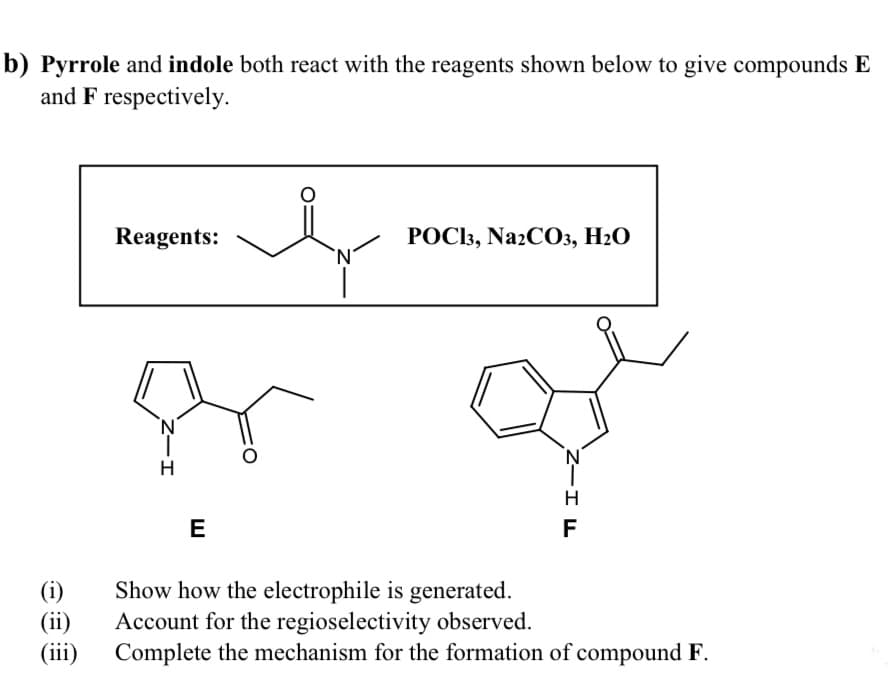b) Pyrrole and indole both react with the reagents shown below to give compounds E and F respectively. Reagents: POC3, Na2C03, H2O `N' 'N E F (i) (ii) Show how the electrophile is generated. Account for the regioselectivity observed. Complete the mechanism for the formation of compound F. (iii) Z-I
b) Pyrrole and indole both react with the reagents shown below to give compounds E and F respectively. Reagents: POC3, Na2C03, H2O `N' 'N E F (i) (ii) Show how the electrophile is generated. Account for the regioselectivity observed. Complete the mechanism for the formation of compound F. (iii) Z-I
Chapter19: Aldehydes And Ketones: Nucleophilic Addition Reactions
Section19.SE: Something Extra
Problem 39MP
Related questions
Question
100%

Transcribed Image Text:b) Pyrrole and indole both react with the reagents shown below to give compounds E
and F respectively.
Reagents:
РОС3, NazCОз, Н2О
`N'
H
E
F
(i)
(ii)
(iii)
Show how the electrophile is generated.
Account for the regioselectivity observed.
Complete the mechanism for the formation of compound F.
Z-I
Expert Solution
This question has been solved!
Explore an expertly crafted, step-by-step solution for a thorough understanding of key concepts.
Step by step
Solved in 5 steps with 4 images

Knowledge Booster
Learn more about
Need a deep-dive on the concept behind this application? Look no further. Learn more about this topic, chemistry and related others by exploring similar questions and additional content below.Recommended textbooks for you

